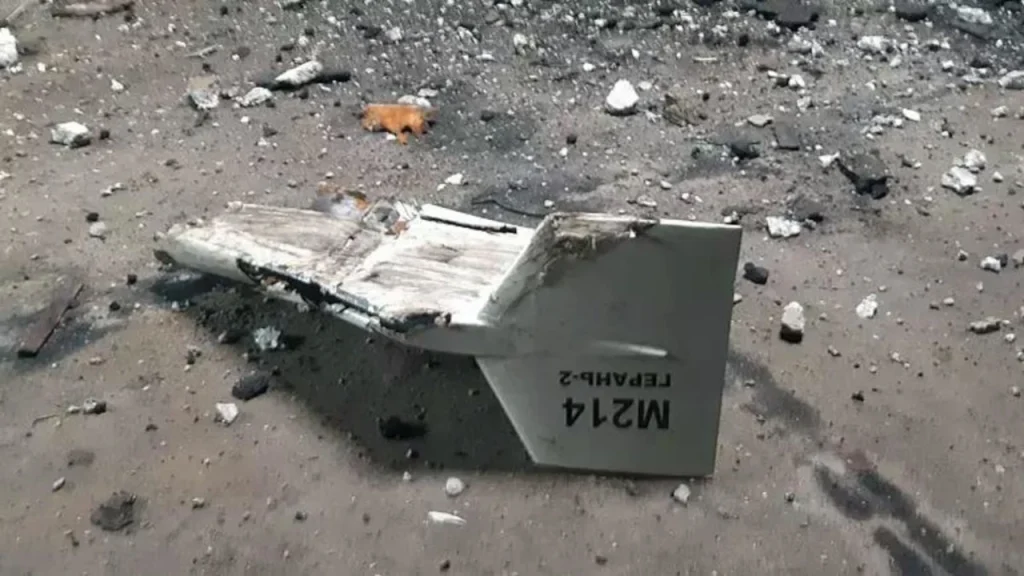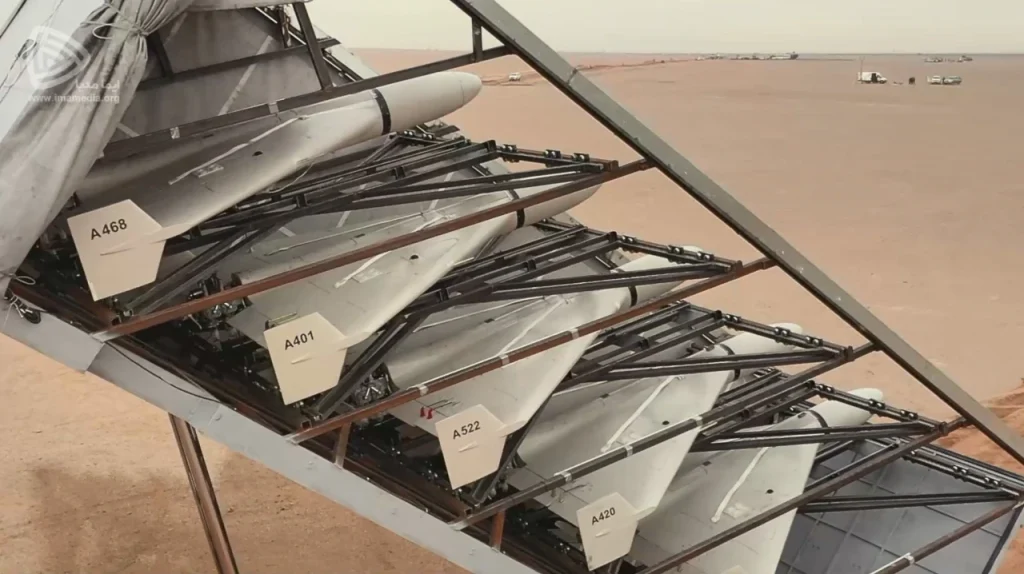Iranian Aircraft Manufacturing Company (HESA) Shahed-136 kamikaze drones have become a headache for the US and the West, who arm and control the Armed Forces of Ukraine (AFU). The cheap drones have started destroying the costly, limited and sophisticated Western and US military equipment supplied to Ukraine.
Ukrainian Colonel Rodion Kolagin, the commander of Ukraine’s 92nd Mechanized Artillery, told US media that Shahid-136 drones, painted in the colours of the Russian flag and renamed Geranium-2, flew over Ukrainian armoured and artillery positions in the northeast Kharkiv region. The drones typically fly in tandem and then engage their targets — destroying two 152 mm howitzers, two 122 mm howitzers, and two vehicles. Before the widespread use of the Shahed-136 drones, Russia used them on a test basis last month, hitting a US-supplied M777 155mm light howitzer. He said another Shahid-136 drone, identified as M214 Geran-2, had a technical fault and was recovered by the Ukrainian military.

Shahid 136 drones
In 2021, the Israeli newspaper Jerusalem Post wrote that Iran had created a new way to launch drones through multiple or mass launches. Drone swarming is a new technology in which multiple drones are used to attack a target that can overwhelm enemy air defenses.
The drone has a delta-wing configuration with stabilising rudders at the tips. An elegant form is achieved by centralising the fuselage and blending it with the wing elements. The nose part holds the warhead and the optics required for a precision strike. The engine is positioned at the back of the fuselage and powers a pusher propeller with two blades.
The UAVs are launched near-horizontally with a modest upward tilt, and their first phase of flight is assisted by Rocket-Assisted Take-Off (RATO). Immediately after launch, the rocket is discarded, and the drone’s conventional engine unit takes over. As a result of the launcher rack and drone collection’s inherent mobility, the whole unit may be mounted on the back of almost any military or commercial vehicle, enabling mobile “hit-and-run” operations that might defy countermeasures.
As per Russian sources, it is armed with four or eight missiles and, if necessary, can be equipped with a self-destruct device. Having fired all the ammunition, it can collapse on the target and explode.

The information from Russia and Ukraine hints that Shahed-136 drones are made of fibre and, hence, difficult to detect. The drone’s engine is very cheap but allows it to accelerate the device to 150 km / h, which is 20 km / h faster than the Turkish Bayraktar TB2 drone used by the Armed Forces of Ukraine.
The drone carries a warhead of about 36 kgs and is claimed to have a range of about 2500 km. However, if one assumes that the actual flight range of drones is two to three times lower than the declared one, this is still an excellent range.
Shahed-136 drones are more practical than the Turkish Bayraktar TB2 drones. The Turkish Baykar made drones are white elephants for the Ukrainians as they are too expensive to be risked and too lightly armed for use.
Ukraine uses Australian-made DroneShield for drone defence; however, it is unknown if they are effective against Iranian drones owing to the usage of fibre materials in the airframe.
Russian purchase of Iranian drones
Iranian unmanned aerial vehicles were once successfully used in Yemen, and Russian specialists studied the results of this experience. The drone was used to attack the Saudi Arabian oil facilities and has been dubbed Aramco Killer.
Now Russia can hunt HIMARS, Caesar and Dana self-propelled guns, M777 cannons and any other weapons of the West, regardless of the expense of equipment and without fear of losing troops. This capability was sorely lacking with the Russian forces.
The Russian Defense Ministry has probably bought a lot of Iranian aircraft-type drones. Experts identified one of the UAVs as the Iranian Qods Yasir UAV. This small drone conducts surveillance for 8 hours at a distance of 200 kilometres, has an autonomy of 20 hours, a ceiling of 16,000 meters, a communication range of up to 100 km, and can drop one ammunition.
In addition to the Shahid-136 drones, Russia appears to have purchased Shahed-129, a Predator-like drone. The Shahed-129s optical system “sees” within a radius of 211 km and can provide the military with a clear image of the terrain at night, during the day and in all weather conditions.
As per the available information, Russia has brought 46 complexes of Shahid-136 drones, but the number of drones purchased is unknown.
Russia could use these or other Iranian drones to support troops from the air and intercept Ukrainian UAVs. In addition, they can hit the much hyped HIMARS rocket artillery systems. Ukrainian air defense can also shoot down Iranian designed drones, but since the drones are cheap, the Russian losses will be less.
Western intelligence states that the Iranian instructors have already begun to train Russian operators to use the Shahed 129 UAV. A training centre for UAV operators is already operating in Donetsk.
The United States recently imposed sanctions on four businesses engaged in delivering unmanned aerial vehicles (UAVs) to Russia. These include Safiran Airport Services, which organises the flights of Russian military transport aircraft from Iran, Paravar Pars Company, which develops and manufactures drones, and Baharestan Kish Company, which also develops and manufactures drones.

this picture has been posted many times on the internet with different dates next to it by news media. You would do well to view this article with suspicion